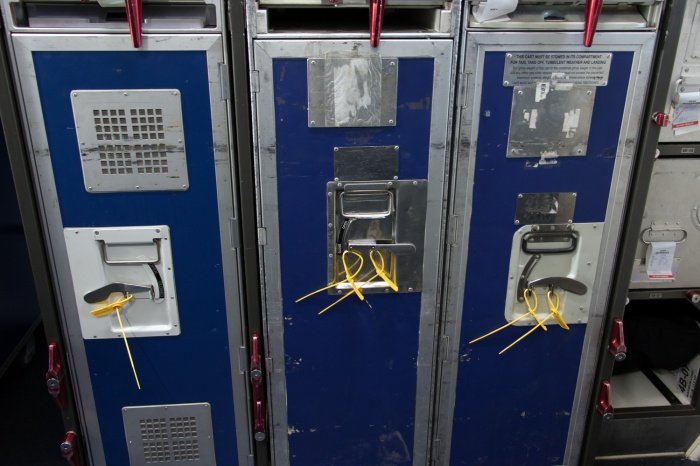Aircraft seals support day-to-day safety and reliability. Cabin crews apply them as visible markers when access points need to be checked. Engineers depend on them in systems that must hold pressure or prevent leaks. On the ground, seals also create a traceable record for freight moving through busy airports. Seals connect everyday tasks on the ground with the technical routines that keep aircraft in service.
Visible Barriers in Routine Use
Operators apply tamper-evident markers where quick checks are needed. Cargo compartments often carry seals that show if access has taken place. Crew rest areas and security lockers are also fitted with them when extra control is required. Cabin teams fit light padlocks or pull-tight devices to trolleys and storage boxes so items remain secured until service.
Each seal has a number recorded for a clear chain of custody during handovers. In aviation practice, many organisations describe these measures under aerospace seals, as they sit alongside other controls used to maintain order and accountability on board.
Cargo and Ground Handling Security
Heavier duties call for stronger devices. Cable and bolt formats are used on containers and high-value consignments moving through hubs. Serialisation helps create a trace from dispatch to arrival. Strip designs offer a middle option where moderate resistance and quick fitting are required. Different seal types are chosen because cargo moves under varying levels of control.
Inside the Aircraft
Sealing is part of many technical assemblies, helping systems operate safely and predictably.
Engines: Engine seals keep hot streams separated, rotary and shaft seals limit leakage around moving parts, and gasket sealing
maintains joints that support gas path flow. Stable pressure regulation depends on barriers that hold air in place during climb and cruise at high altitude.
Fluid systems: Hydraulic assemblies need tight seals to contain pressurised fluid. Fuel systems rely on precise interfaces to manage flow and temperature. Fluid conveyance pipes across bays and wings are exposed to stress and vibration, so they need seals that can cope with constant movement. Oil filters also depend on secure seating to keep contaminants trapped.
Lighting and electrical systems: Grommets and glands prevent moisture from reaching contacts. Navigation lights stay reliable when sealed against water and dust.
Sealing materials used in these roles are selected for strength against heat and the cleaning agents that aircraft systems are exposed to.
Doors, Hatches, and Cabin Comfort
Weather and airflow meet the airframe at every boundary. An inflatable door seal helps keep the pressure vessel tight during flight and reduces drafts during ground operations. Designers seek to limit water intrusion around doors and service panels because trapped moisture can damage trim and wiring.
Crews report fewer faults when gaps are managed effectively, as wind noise drops and noise reduction efforts reach targets set for passenger spaces. Cabin noise can be tempered further through local fittings where noise control foams work alongside seals that prevent rattles and leaks.
Maintenance and Reliability
Inspection schedules include specific checks on small rings, gaskets, and labels. A maintenance facility replaces worn parts and records serials so traceability remains intact. Teams look for cracking and flattening that signal the end of service life. Aircraft maintenance carried out on this cycle helps avoid last-minute delays that can cascade through a day’s programme.
Procurement teams often specify high-quality seals that match environmental and mechanical demands for the location where they will sit. Selecting appropriate aviation parts limits rework and supports predictable intervals between checks. Consistent practice across fleets keeps training simple, even when aircraft models differ in layout or access points. Clear records make it easier for the aviation community to review trends and adjust intervals before problems surface.
Everyday Examples
Across an airport, different teams use seals in ways that connect their work.
– Cabin crew handle trolleys that remain closed until the seal is cut in front of passengers.
-Engineers rely on marked panels to confirm that maintenance has been carried out before the next flight.
– Freight staff track numbers on cargo containers to maintain a record from loading to arrival.
Though the settings vary, the purpose is the same: to give each group confidence that the handover they receive is secure and ready to use.
Why Small Parts Matter
Seals cost little in comparison to major aircraft systems, but their reliability removes doubt during checks and handovers. A clear indicator on a cart avoids disputes about stock. A tight ring in a pump keeps fluid where it belongs. A barrier on a container creates accountability across long supply chains. Simple parts make complex routines easier to run at pace, which is why they appear across so many tasks on the ground and in the air.

